Upper Paleolithic Timeline
42 000 years ago: Paleolithic flutes in Germany
42 000 years ago: Earliest evidence of advanced deep sea fishing technology at cave in East Timor- high level maritime skills and technology needed to make ocean crossings to reach Australia and other islands- consuming large numbers of big deep sea fish like tuna
41 000 years ago: Denisova living in Altai Mountains of Russia
40 000 years ago: extinction of Homo neanderthalensis
40 000 years ago: Aurignacian culture begins in Europe
40 000 years ago: oldest known figurative art the zoomorphic Lowenmensch figurine
40 000 years ago- 30 000 years ago: First human settlements formed by Aboriginal Australians in several areas in Sydney, Perth and Melbourne
40 000- 20 000 years ago: oldest known ritual cremation, the Mungo Lady in Lake Mungo Australia
35 000 years ago: oldest known figurative art of a human figure (Venus of Hohle Fels)
33 000 years ago: oldest known domesticated dog skulls in Europe and Siberia
30 000 years ago: rock paintings tradition in India
29 000 years ago: earliest ovens found
28 500 years ago: New Guinea populated by colonists from Asia and Australia
28 000 years ago: oldest known twisted rope
28 000- 24 000 years ago: oldest known pottery used to make figurines
28 000- 20 000 years ago: Gravettian period in Europe. Harpoons and saws invented
26 000 years ago: people use fibres to make baby carriers, clothes, bags, baskets and nets
25 000 years ago: a hamlet consisting of huts built of rocks and of mammoth bones is founded in Dolni Vestonice in the Czech Republic. The oldest permanent settlement that has yet been found by archaeologists
24 000 years ago: Humans living in Alaska and Yukon North America
21 000 years ago: artefacts suggest early human activity in Canberra Austalia
____________________________________________________________________________________________________________________________
Upper Paleolithic Tools
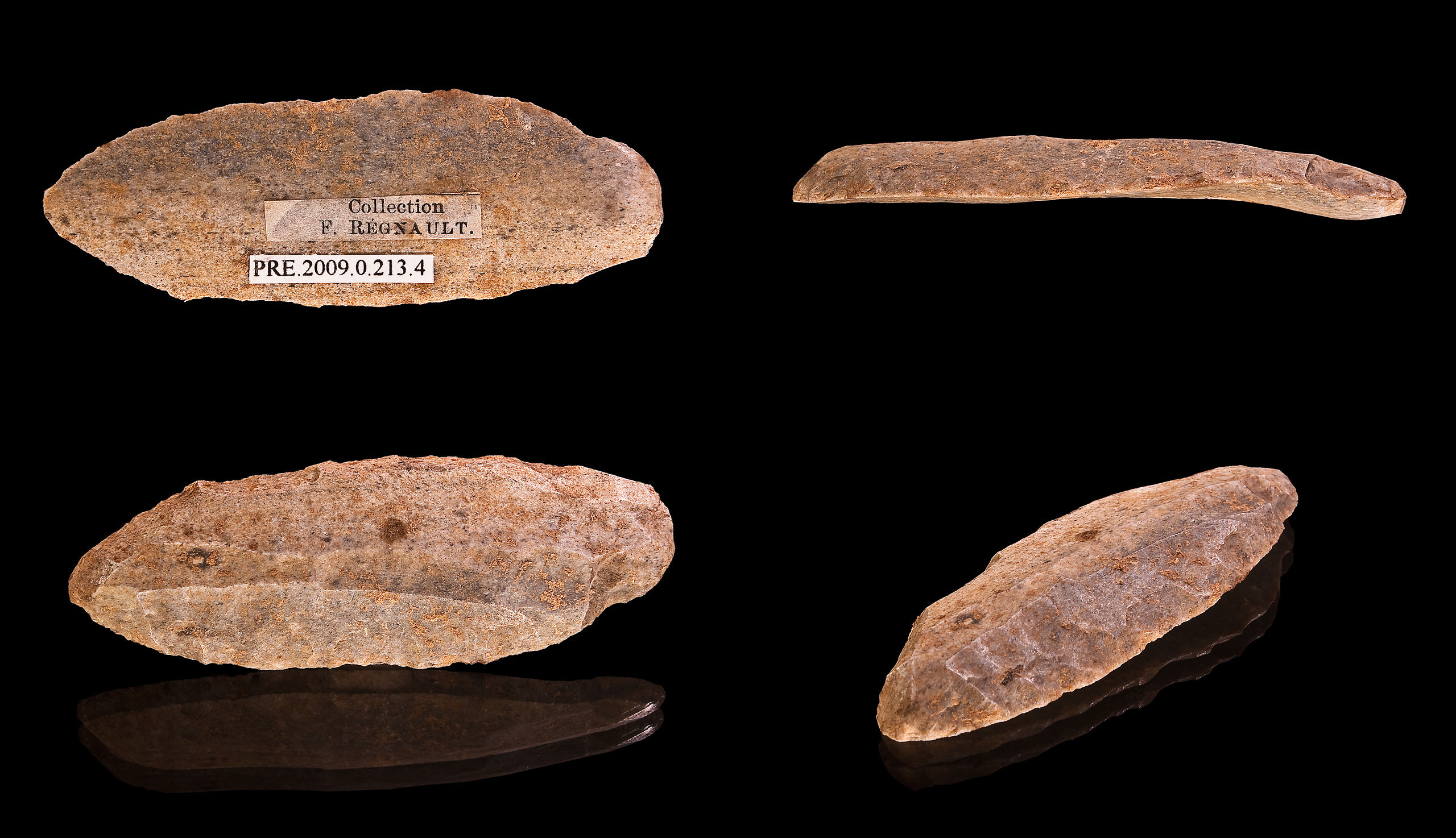
|
The widespread use of blades began in the Upper Paleolithic period. Primarily used by the Early European Humans. Their long sharp edges make them useful for a variety of purposes.
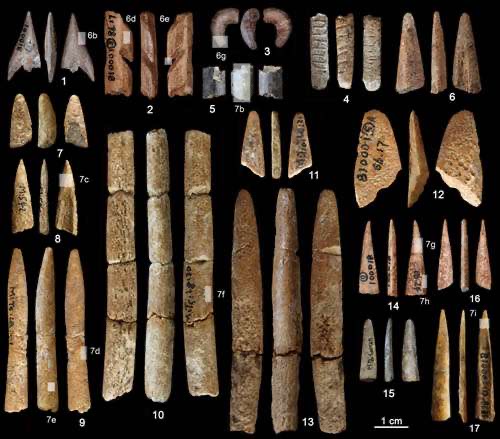
|
Bone tools were cut, carved, polishes and modifies to produced points, awls, harpoons and wedges. These bones tools from china date to around 35 000 years old.
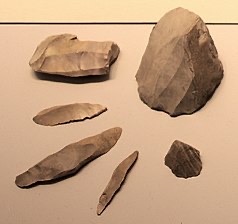
|
Microliths from around 18 000 to 22 000 years ago. Used to form points of hunting weapons such as spears and arrows. Made from wood, bone, resin and fibre.
.jpg)
|
Racloir used for scraping hides and bark and as a knife.
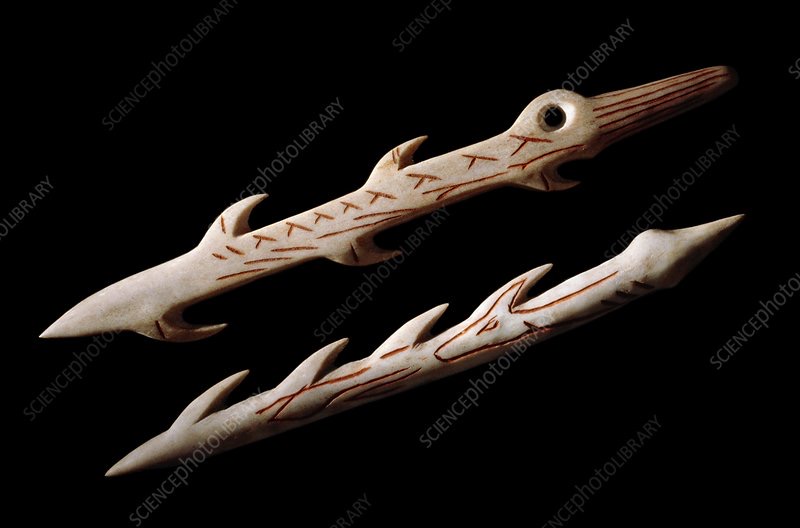
|
Harpoons carved out of bone found in Spain. Date around 7 000 and 15 000 years ago.
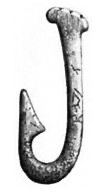
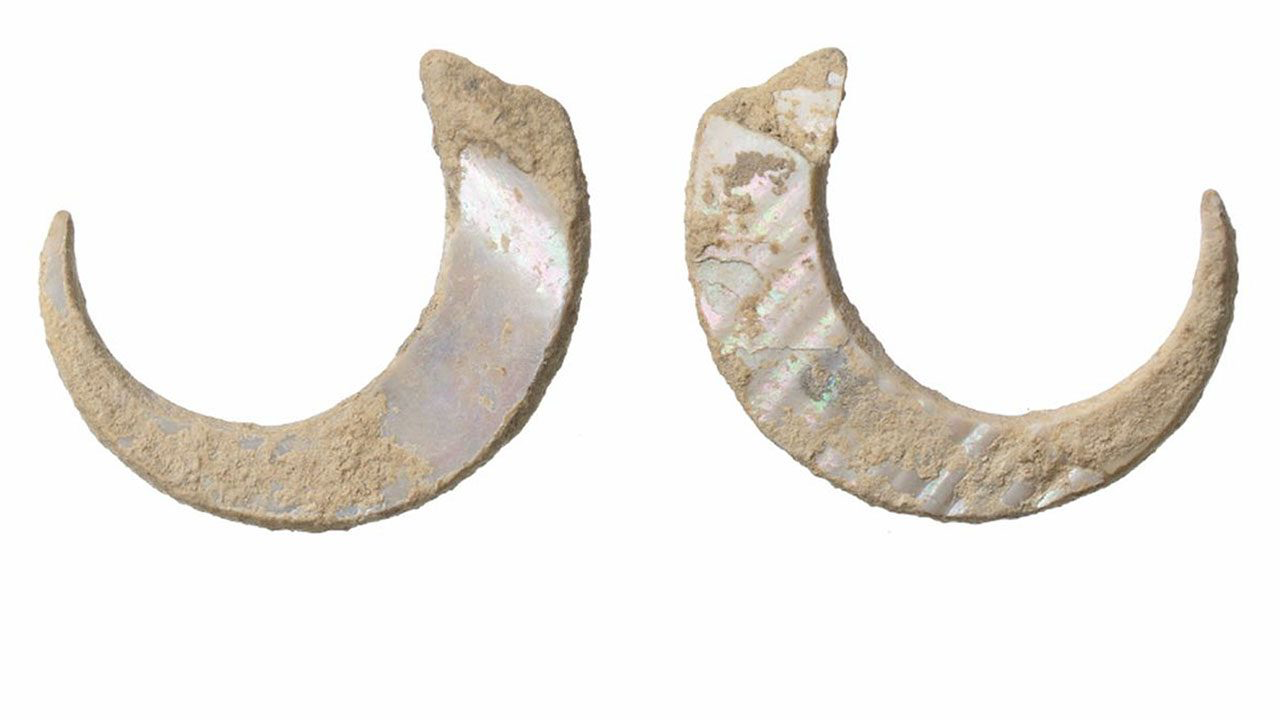
|
The oldest fish hooks date to around 22 000 years old and were made out of sea snail shells. Other fish hooks have also been carved out of bone.
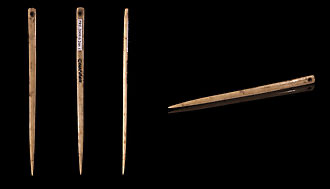
|
The first form of sewing was probably tying together animals skins using thorns and sharpened rocks as needles with animal sinew or plant material as thread. Needles were then made from animals bones. Needles were then later being made out of ivory.
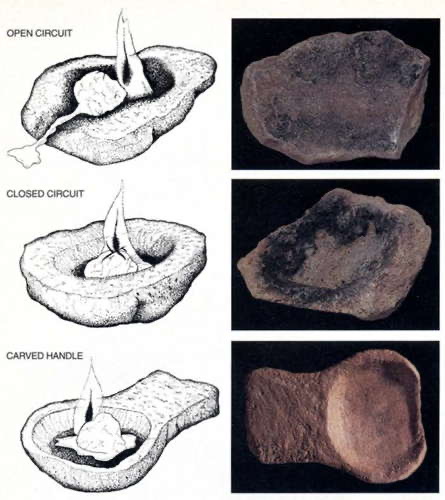
|
Upper Palaeolithic stone oil lamps were made in many different ways. Lamps were lit using animal fat or oil and could be made open for it to run off through natural crevices of the rock, closed to contain the runoff or with carved handles for easier handle. Moss or string would then have been used as a wick and placed in the oil to burn.